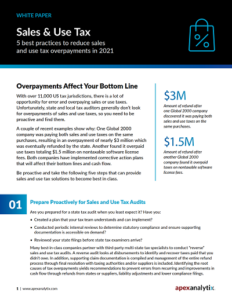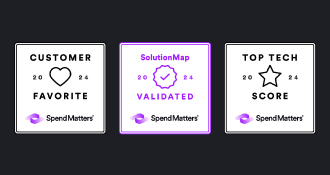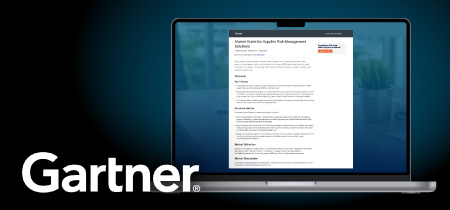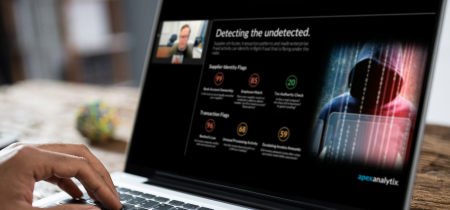
Overpayments Affect Your Bottom Line
With over 11,000 US tax jurisdictions, there is a lot of opportunity for error and overpaying sales or use taxes. Unfortunately, state and local tax auditors generally don’t look for overpayments of sales and use taxes, so you need to be proactive and find them.
A couple of recent examples show why: One Global 2000 company was paying both sales and use taxes on the same purchases, resulting in an overpayment of nearly $3 million which was eventually refunded by the state. Another found it overpaid use taxes totaling $1.5 million on nontaxable software license fees. Both companies have implemented corrective action plans that will affect their bottom lines and cash flow.
Sign up to receive Analyst Reports, Webinars & more Procure-to-Pay Content
Be proactive and take the following five steps that can provide sales and use tax solutions to become best in class.
1. Prepare Proactively for Sales and Use Tax Audits
Are you prepared for a state tax audit when you least expect it? Have you:
• Created a plan that your tax team understands and can implement?
• Conducted periodic internal reviews to determine statutory compliance and ensure supporting documentation is accessible on demand?
• Reviewed your state filings before state tax examiners arrive?
Many best-in-class companies partner with third-party multi-state tax specialists to conduct “reverse” sales and use tax audits. A reverse audit looks at disbursements to identify and recover taxes paid that you didn’t owe. In addition, supporting claim documentation is compiled and management of the entire refund process through final resolution with taxing authorities and/or suppliers is included. Identifying the root causes of tax overpayments yields recommendations to prevent errors from recurring and improvements in cash flow through refunds from states or suppliers, liability adjustments and lower compliance filings.
2. Evaluate the Configuration of Your ERP System
Is your company’s ERP platform properly configured to determine your sales and use tax obligation? As a result of the Wayfair vs. SD decision, we are noticing an increase in vendors that are charging sales tax on all sales made in all states, rather than performing a study to determine the taxability of their products and/or services per jurisdiction. This in turn may increase the chance of a company paying sales tax on purchases on which sales tax should not be imposed and/or accruing use tax when the sales tax has been paid. Also, many tax determination modules within ERP systems that process invoices with sales tax may not validate the tax.
Here are additional critical elements to ensure that the correct sales and use tax is paid:
• Item/Product/Material/Service: ensure the correct products or services are selected
• Location: where purchases will be used or consumed
• Tax Jurisdiction Code: plant location and cost center assignments (usually from third-party “bolt-on” software to your ERP platform)
• Taxability/Tax Determination Matrix: the appropriate tax code for material numbers associated with each tax jurisdiction code
If any of these settings is out of date or configured improperly, you may end up paying too much or too little tax.
3. Collaborate to Make Solutions Work
The specific work processes used by your procurement, accounts payable, information technology and tax teams directly affect your sales and use tax disbursements. See how a few examples determine results:
• Procurement impacts the accuracy of sales and use tax disbursements as purchase orders are created. One common mistake is to misidentify the actual location where goods or services are shipped to or consumed or used. Establishing ERP defaults is also within the purview of procurement. Drop-down menus are used to select the proper material number, which may impact the taxability code. One company discovered its platform was set to apply California as the default plant location, despite the fact that purchases were being shipped throughout the country. Another discovered inventory items mistakenly defaulted to a taxable tax code, with no viable workaround available. A system change was required.
• Accounts payable processes impact disbursements. Does AP match invoices to purchase orders to make certain the correct tax is applied? Does AP routinely check to see if tax is included on the supplier’s invoice before they trigger your ERP platform to calculate use tax? If not, you may double your tax payments. It is also important for AP to segregate sales tax amounts in your ERP system as invoices are entered for payment. Doing so is imperative to analyze transaction data to uncover sales and use tax errors.
• Information technology can work with your tax team to address system configuration issues and to make enhancements that ensure proper sales and use tax disbursements. IT may also have the critical responsibility of keeping your ERP system and third-party sales and use tax software up to date.
• Tax team members should review work processes and ensure established procedures are being followed. They should follow changes in the tax law, apply those changes to business operations and communicate critical information to key players in procurement, accounts payable and IT.
If any of these settings is out of date or configured improperly, you may end up paying too much or too little tax.
Do You Utilize Tax Technology to Monitor Your Sales and Use Tax Compliance in “Real Time”
• “Back-End” Technology—to assess your overall sales and use tax compliance functionality on a periodic basis
• Audit Planning Tool—snapshots of where sales and use tax payments were made by vendor, state or company/division/business unit
• Other Sales and Use Tax Initiatives—“snapshots” of transactions where both sales and use tax were paid, transactions where sales or use tax was not paid, application of sales tax to specific vendors or commodity codes, etc.
4. Analyze the Root Causes of Errors and Implement Corrective Action
Take a close look at transactional data and past audit results to find patterns that indicate configuration issues, work process errors or misunderstanding of tax laws. Track problems back to the department and observe their processes for corrective action. Working with outside tax solution providers will enable root cause analysis and corrective action recommendations.
5. Use Technology to Monitor Sales and Use Tax Disbursements
Today software solutions are available to help you evaluate your sales and use tax exposure. Continuous monitoring software can provide real-time, transaction-based data to prevent both overpayments and underpayments. The same technology is used on the “back end” to assess your overall sales and use tax compliance on a periodic basis. You can generate tax payment reports and sort the information by vendor, state, business unit or other parameters you choose. You can readily see transactions where both sales and use tax were paid, as well as instances where no taxes were paid at all. You also can determine how sales taxes were applied to specific vendors and to specific commodity codes. Reviewing such information on a regular basis can help you fine-tune your payment platform and work processes for more accurate results.
To Find Out More
If you would like to know more about best practices that can reduce your sales and use tax exposure, contact apexanalytix at +1 800-284-4522.
About the Author
As senior vice president of global field operations, Phil Beane leads our commercial and retail audit teams and international operations. His focus on customer satisfaction and value creation has helped to fuel a period of double-digit growth. Phil previously was responsible for leading the apexanalytix audit and software implementation support teams in the Americas. Prior to joining the company, he worked with GMAC Insurance, Questcon Technologies and BCE Emergis, where he specialized in quality assurance consulting and management. Phil graduated from the University of North Carolina at Greensboro with a degree in information systems. He also served in the U.S. Army’s 82nd Airborne Division as a communications specialist.






